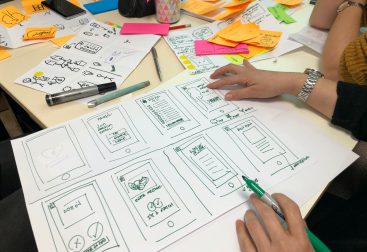As technology evolves, artificial intelligence increasingly permeates various fields, including user experience design. While AI has made impressive strides in automating tasks and providing data-driven insights, the essence of UX remains deeply human. The importance of the human touch in UX design cannot be overstated, as user experience design is not simply a formulaic process; it involves understanding nuanced human emotions, behaviours, needs and goals.
The Complexity of the Human Experience
UX design is fundamentally about solving problems for people. It requires a deep understanding of user needs, preferences, and contexts, which are often complex and multifaceted. Unlike straightforward tasks, user experiences are influenced by emotions, motivations, prior experiences, and even cultural backgrounds. This abstract nature of human experience makes it challenging to codify into algorithms or formulas.
While AI can analyze user data and identify trends, it lacks the ability to grasp the emotional and contextual subtleties that are crucial for effective design. For instance, consider a user experiencing frustration when navigating a poorly designed product. An AI system may identify the high bounce rate and suggest improvements based on data patterns. However, only a human designer watch a user struggle with a product, empathize with that user, understand the emotional impact of their experience, and create a solution that resonates on a personal level.

Empathy is at the heart of UX design. Designers must be able to step into the shoes of their users, experiencing their challenges and aspirations firsthand. This human-centered approach is vital for uncovering insights that go beyond surface-level quant data. While AI can facilitate user research by gathering and analyzing quantitative data, it cannot truly understand the feelings or thoughts behind that data.
For instance, in conducting interviews or usability tests, a human designer can pick up on subtle cues—such as body language, tone of voice, and emotional reactions—that AI would overlook. These insights are crucial for refining design concepts and ensuring that they genuinely address user needs. The ability to empathize allows designers to create experiences that are not only functional but also meaningful, fostering a deeper connection between users and products.
Formulaic Approaches
While there are established principles in UX design, such as Nielsen’s 10 heuristics, these rules serve as guidelines rather than strict formulas. Effective design is often born from creativity, intuition, and a willingness to explore the unknown. This is where the abstract nature of UX comes into play—designers must navigate ambiguity and uncertainty, experimenting with ideas and iterating based on user feedback.
AI, despite its capacity to analyze vast amounts of data, tends to operate within defined parameters and existing patterns. This reliance on historical data can stifle innovation and creativity. Design is an iterative process that thrives on exploration, and human designers bring a unique perspective that allows for fresh ideas and unconventional solutions. Relying solely on AI-driven design could lead to a homogenization of user experiences, as AI may only replicate what has already been successful rather than pushing the boundaries of creativity.
Collaboration
UX design is rarely a solitary endeavor; it often involves collaboration among diverse teams, including researchers, developers, marketers, and stakeholders. Effective communication and shared understanding are essential for aligning goals and creating cohesive user experiences. A human touch is vital in facilitating these discussions, as it fosters relationships built on trust and empathy.
While AI tools can assist with project management and data analysis, they cannot replace the nuances of human interaction. Designers rely on their interpersonal skills to navigate differing perspectives, mediate conflicts, and synthesize ideas. This collaborative spirit enriches the design process and leads to more innovative solutions. A purely AI-driven approach would lack the emotional intelligence necessary for fostering collaboration and creativity.
AI & Designer
Rather than viewing AI as a competitor, it’s more productive to see it as a tool that can enhance the work of UX designers. AI can assist in tasks such as data analysis and user segmentation, it can act as an assistant or sounding board for a UX designer who needs validation of a thought or idea. In my opinion the future of UX lies in a symbiotic relationship between humans and AI, where each complements the other’s strengths.
For instance, AI can help identify trends in user behavior, but human designers must interpret those findings within the broader context of user needs, emotions and specifically the product being designed. Designers can leverage AI to gain insights while applying their unique understanding of human experience to create solutions that resonate with users on a deeper level. This collaborative approach ensures that usability remains at the forefront of design while benefiting from the efficiencies that AI offers.
The human touch in UX design is irreplaceable. While AI can automate certain tasks and provide valuable insights, it cannot replicate the empathy, creativity, and nuanced understanding that human designers bring to the table. UX is not a formulaic process; it is an art form that thrives on the exploration of ambiguity and the connection with users. As we navigate the evolving landscape of technology, it is essential to recognize the importance of human-centered design in creating meaningful and effective user experiences.
As designers, we must embrace the opportunities that AI presents while remaining steadfast in our commitment to understanding and empathizing with users. In doing so, we can ensure that the future of UX remains rich, diverse, and profoundly human.



